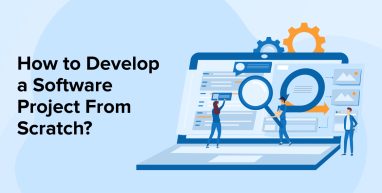
In this age of digitalization where every business owner wants to have a digital platform for his firm and this has increased the demand for software development companies. Software development is basically a process that involves creating, designing, documenting, prototyping, testing, deploying, and supporting a system for different types of businesses as per their requirements. In any software development service company, when any software engineering team takes up a project and thinks of how to develop software there are many choices. Some of them are which programming languages to use, what kind of data storage to have, how the app will work on different operating systems, and so on. Then comes the choice of selecting a way to write a software code and which method to use for it.
There are a lot of options when it comes to choosing how to develop software and the right methodology for it. Here, in this blog, we will go through an ideal software development process that most of the top software development companies follow and we will also have a look at the top software development methodologies that can be used to make the development process smooth.
1. Software Development Process
Here is the process that every software developer must follow while creating a software project with any of the programming languages.
1.1 Create Basic Prototypes
The first thing to do in the software development process is to put preliminary research into practice and this can achieved by following the process of MVP in software development. This helps the developer understand whether the idea will work in real life or not. Both these options are used for testing which makes the project agile. It can be a little time saver as once the ideas are validated, the team members know how to develop/create software and how it is going to work. Therefore, creating a prototype or MVP can be the best option.
1.2 Plan
After the developers are done finalizing the prototype of the project, the next step is to put proactive thought into software components and release the project plan and timeline to the client. The project plan involves everything. Form the estimation of how many software developers are going to work on the project and how they determine software architecture and work for it.
In this phase, the domain experts start the process with idea validation. Here, the development team goes through the product discovery process which is all about connecting the dots between what to create and whether the users will prefer it or not. This is where the validation of assumptions is carried out. And measuring it enables the developers to plan the project deadline and budget. After this, to give a proper idea about the cost of the project to the business organization, the development team goes through the software development cost estimation process where first rough and then detailed estimation is prepared.
Later, the feasibility and requirement analysis is done to complete the software development planning process.
1.3 Execute & Deploy
After having a perfect plan to develop software for the client as per his requirements, the next step is to take the prototypes and beta systems from the software designing phase and then convert the designing plans into the working model. And because of the issues that come along with the development processes and the constant requirement changes that come from the clients, the execution of the design must be done using the right software development methodology.
The developer selects the perfect model and starts working with it quickly by following several smaller steps like –
- Preparing for Rapid Application Development
- App development
- App Coding
- Integration, Unit, and System testing
Here the software development team makes sure the process goes on smoothly and the software is created just the way the client needs it.
1.4 Testing
When it comes to testing, the software development team begins it as soon as the first few lines of code are written. This helps the testers to go through the entire product while it is being developed. The quality assurance services offered by software development companies in this stage not only describe the scope of testing but also delivers a flawless product. This process focuses on requirement analysis, test planning & execution, defect tracking, and pre-launch regression testing.
After this, which type of testing, manual or automated needs to be applied is decided. Manual testing is better when the project is small and one has to check the product as per the end-user’s perspective. Automated testing is feasible for big projects where continuous testing is required.
1.5 Deliver
After the creation of the project, the last step is to check it and deliver it to the clients, so that their end-users can start using it to make their tasks easier. But before the systems development company delivers the product, they must ensure that it is working perfectly and then they must make the users of the company like the team at the client’s company understand the system. Proper training in the software program must be given. The development firm also ensures the client fixes any type of issues whenever they arise.
2. Best Software Development Methodologies
The 5 best software development methodologies are –
2.1 Waterfall

The waterfall is a development process that was used by software developers decades ago for the first time, but it is still very much relevant. It is a very simple and linear method. In this process, the software development stages are arranged in a cascading and sequential manner. It is very easy to understand and use, which makes it even more popular amongst developers. Each stage in the waterfall method must be completed by a software developer before moving toward the next one. For instance, to develop software correctly with this method, the expert must fulfill all the requirements before starting the designing stage of the process.
Advantages of Waterfall
- Being a linear process for developing software, the waterfall model makes it for the developers to understand.
- While working with this process, there is no chance of miscommunication between the software developers.
- All deliverables and specifications are spelled out before the project life cycle.
Disadvantages of Waterfall
- The waterfall method doesn’t come with customer feedback support in the early phases and this increases the risk of the web development project changing off target.
- Being a rigid model, it doesn’t allow any changes and because of this, it is unsuitable for complex projects like enterprise-level accounting software.
- Testing of the software is only executed at the end of the software development and because of this, it is difficult to solve problems at the later stage.
- In waterfall, the software developer has to spend a lot of time creating documentation that doesn’t help users in solving their issues.
2.2 V-Shaped
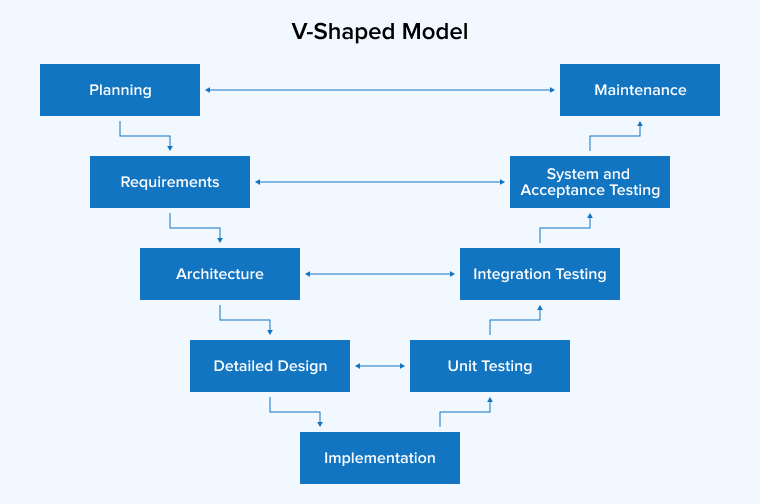
The V-shaped software development process is another form of a Waterfall model. And this is why in spite of being an easy-to-understand method, it is not very popular. The main issue with this type of approach is that it lacks testing. So, the developers working on this method save a lot of time in testing the product in the end. And here, each stage of the process has followed some kind of verifications and validations.
Advantages of V-model
- Easy and simple to use.
- Allows you to avoid the downward flow.
- Works perfectly fine with small projects as their requirements are easy to understand.
- Testing activities like planning the tests and test designing are done before the coding starts.
- V-model comes with proactive defect tracking.
Disadvantages of V-model
- The V-model is not flexible and because of it, developers find this process very rigid.
- If developers make any changes in the software midway, this process will make the developers update the requirement and test documents.
- The software development process is carried forward in the implementation phase.
2.3 Spiral

The spiral model is an important project life cycle model. It offers support for risk handling. This model looks like a spiral that has many different loops. The total number of loops in the spiral method is unknown and they can vary as per the project type and size. Each loop in this method is known as a Phase. To develop a product perfectly, the software development team needs to create an exact number of phases and this clearly depends on the project manager. A project manager must dynamically determine the exact number of phases.
Advantages of Spiral Model
- There are projects in the market that come with some kind of unknown risks. And in this case, the Spiral software development model is the best as it can easily analyze the risks and handle them.
- When the project requirements keep changing, the spiral model is the best to work on.
- It is best for large and complex projects.
- The spiral model has the capability to offer customer satisfaction and this is why the majority of software development companies use this model.
Disadvantages of Spiral Model
- In comparison with other SDLC models, Spiral is a bit complex.
- If the developer wants to complete the project properly and wants data security, there is too much dependability on the risk analysis approach in the spiral model.
- It is not suitable for projects with a lower budget.
- While working on the prototyping and development phase in the spiral model, time management is a very difficult task.
2.4 Agile

Agile is a methodology that tops the software development interests. It is a totally different approach in comparison to a linear and conventional method. The main focus of Agile is to develop software in such a way that it satisfies all the requirements of the users. It doesn’t give more emphasis on creating project documentation. The tasks in Agile are broken into small sprints and these sprints take around 1-4 weeks to complete.
Basically, Agile is an iterative model that includes various tests. And in this approach, the developers keep on taking users’ feedback after the completion of every sprint and this makes it a more popular model. Besides, it enables proper communication between the users, developers, and customers.
Advantages of Agile
- Agile offers clarity between the software development team members and this offers transparency in the process.
- The software developed using this method has minimal defects. It is because of the iterative effort in fine-tuning and testing.
- It allows frequent project requirement changes in the project development.
Disadvantages of Agile
- Due to the overwhelming changing requests, the software engineering team members may lose their focus.
- As agile focuses more on feedback, the development process can be time-consuming.
- With agile, documentation of the project takes a back seat.
2.5 Scrum
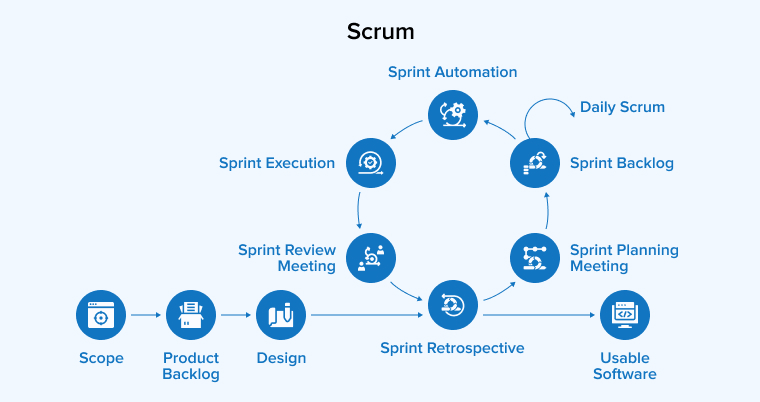
Scrum is one of the most popular and flexible software development methodologies in the market. It is completely based on the philosophy of Agile and it follows an iterative & incremental approach. The Scrum method involves Scrum Master, Product Owner, and the Development Team.
In this approach, the product owner takes the client’s input and ensures that the team will fulfill all the requirements. And at the same time, the Scrum Master will ensure that the developing team members are familiar with the process of Scrum development.
Advantages of Scrum
- Scrum is an effective and economical approach.
- It is very responsive to requirement changes.
- When individual members work on any task, it is very much noticed by the entire team through the scrum meetings.
- Scrum comes with a method that enables the managers to take regular meetings.
Disadvantages of Scrum
- Scrum is not suitable for complex and large projects.
- The software development team members working with this approach must be skilled.
- When there are daily Scrum meetings taken here, they can drain the developers.
3. Conclusion
As seen in this blog on how to develop software from scratch, development is a very crucial process. But with the right choice of programming language, and operating systems, and by following the correct software development process, it can be possible. Besides this, if the developers choose the well-suited software development methodology, the outcome can be more than a client would have expected. So, if you want to deliver a successful system, then creating business software from scratch includes the right choice of process and method.


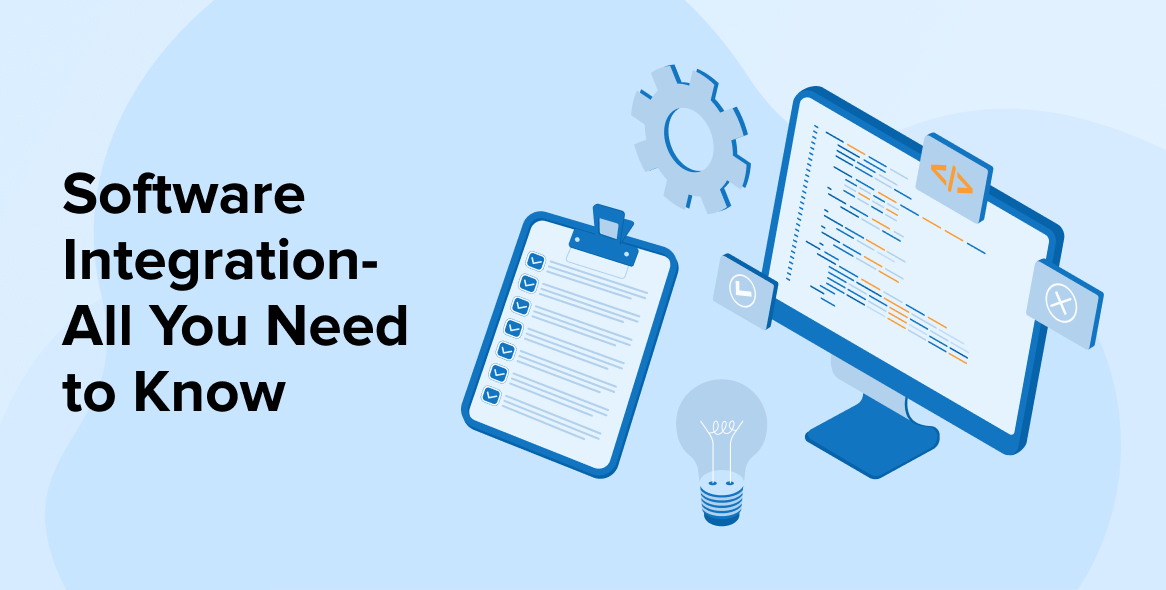
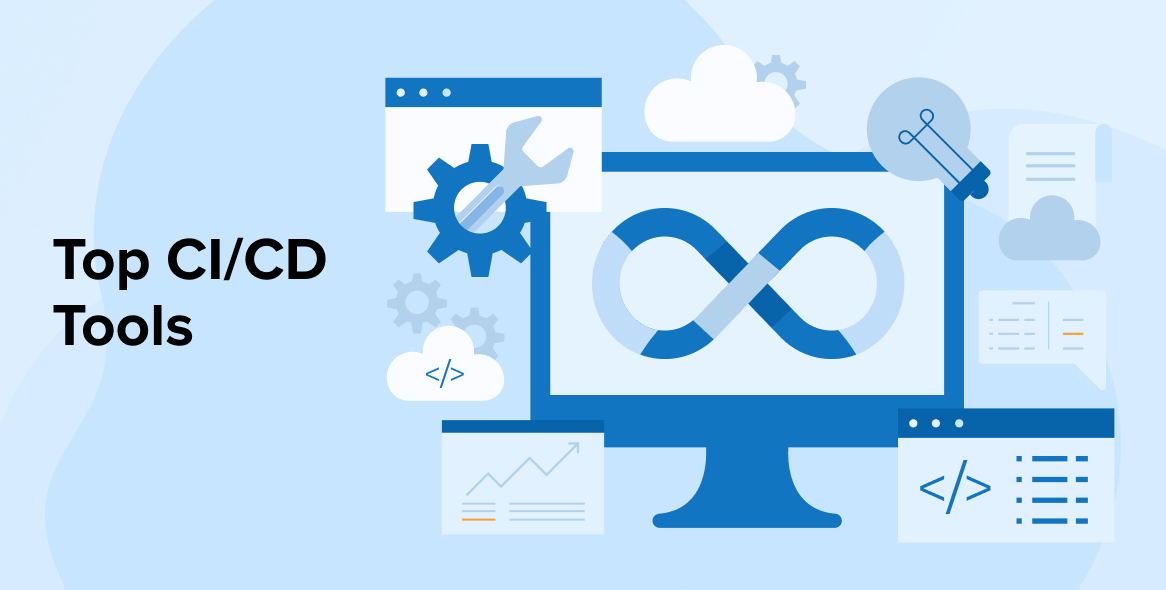
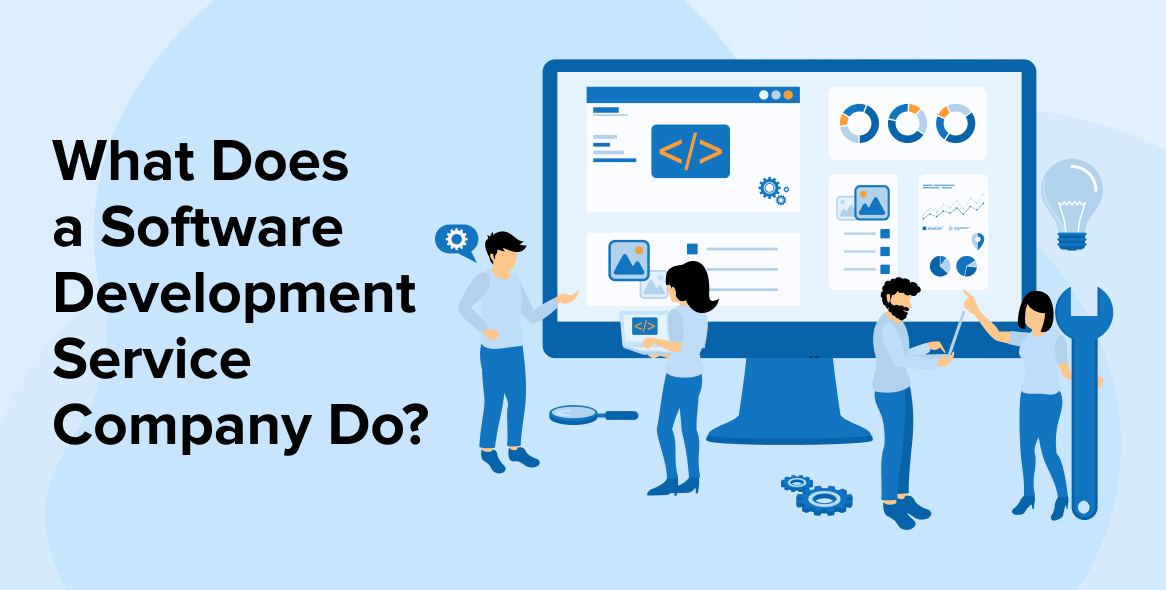

Indeed this article is written in a very simple and effective way it will really help students understand the software development process which will help them in their practicals of implementing software projects effectively. In fact, all the important software development methodologies are mentioned which is must-have knowledge for an aspiring software developer.
Creating custom software from scratch seems like an impossible amount of work, and occasionally it even seems impossible. Being a developer, I can guarantee that if an aspiring developer follows the described software development process in the blog, he will be able to create software that is effective for businesses. However, you can choose the software development methodologies for a project because they vary depending on the needs of each project.
It always seems like a daunting task to develop a software project from scratch, and the only way to build an efficient software solution one must follow the software development process precisely. After reading this article I can assure you that a newbie developer can make any project if he plans ahead and tackles everything steps by step. Following the 5 stages of the software development process along with choosing the right methodology can help a developer build a successful project.
Software ideation, planning, designing the architecture and prototypes, UX and UI, coding, testing, and deployment are all parts of the development process. However, all this is not only done by one person but by many such as project managers, UI/UX Designers, business analysts, software developers, testers, and many others. And the success of developing a software project from scratch highly depends on how the team follows the software development process and which methodology.
Great article on software development! It is important to have a good understanding of the project requirements before hand, as this will ensure that the end product meets the expectations. Incorporating testing and quality assurance into the development process will help in catching bugs and issues early on. Overall, this is a good read.